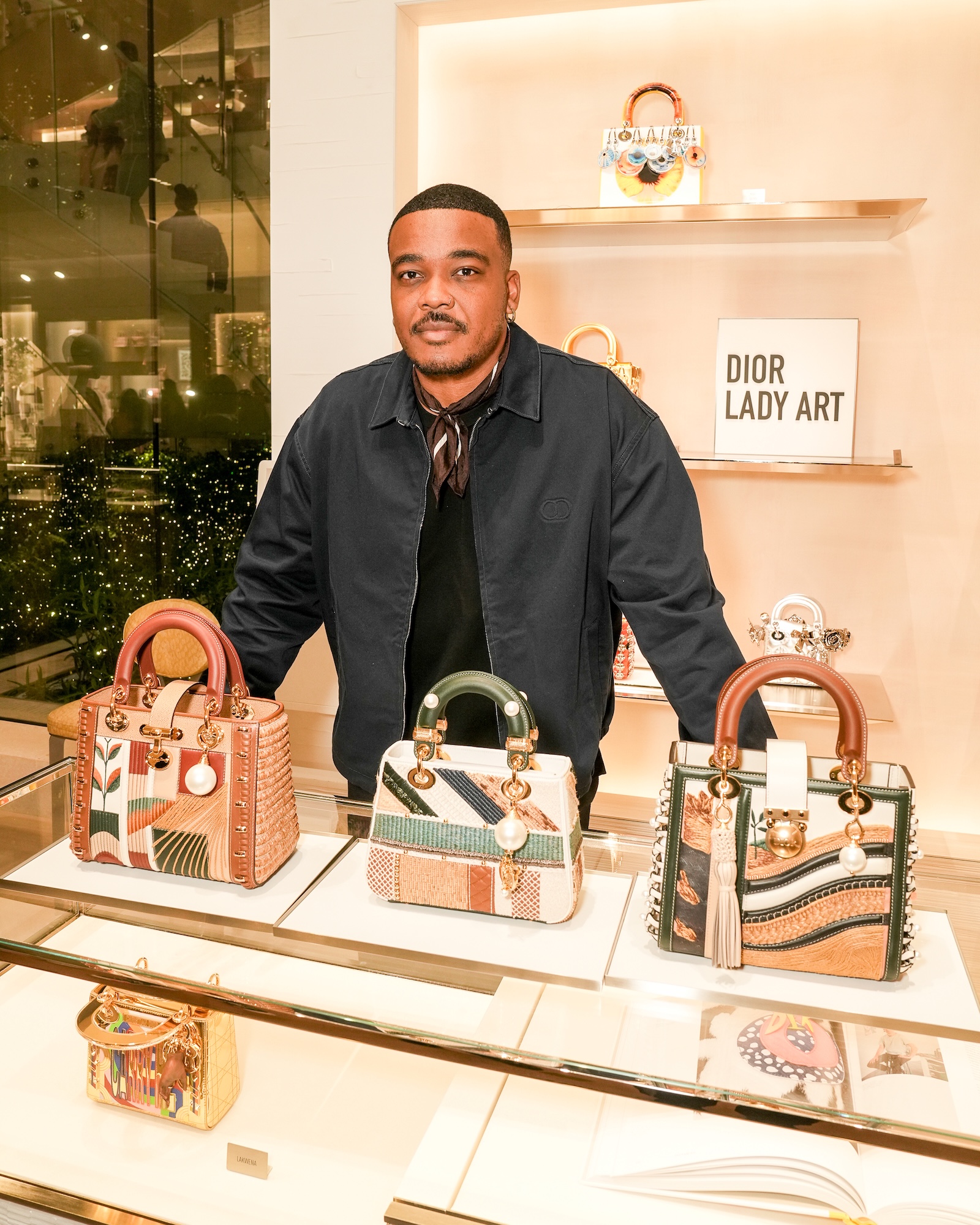

FLORIAN MAIER-AICHEN “UNTITLED” 2019. C-PRINT. 40 3/8 X 32 1/2 INCHES. © FLORIAN MAIER-AICHEN. COURTESY OF THE ARTIST AND BLUM & POE, LOS ANGELES / NEW YORK / TOKYO
Düsseldorf and Los Angeles are a wide aways apart. Geographically, the 5,600 or so miles is no stone’s throw; civically, denizens of the Rhineland city actually revere their scenic waterfront, strolling on the Embankment Promenade, as opposed to the eschewed and sunbaked L.A. River, an abject case study in the short-sighted reimagining of American infrastructure during the mid- twentieth century. Meteorologically, the respective metro areas lay claim to vastly differing weather patterns; damp drizzle parkas versus golden hour linen. Image-making in these places, too, draws from their own distinct sources of thought.
The Düsseldorf School of Photography of the twentieth century’s latter half derives from 1920’s German New Objectivity, favoring documentarian, matter-of-fact modes of processing and contemplating the world. Andreas Gursky’s mundane _99 cent II Diptychon_ illustrates this approach. Standing in contrast is California’s conceptually-inflected students of image-making; John Baldessari and Christopher Williams to name a few. Think color, think alchemy. Think a CalArts, UCLA, Westside chaparral-infused crucible challenging the cool and candid. The allure of cinema a few miles east shouldn’t be discounted, either.
Sitting at a long wooden table in the charming garden behind Blum & Poe Gallery (which celebrates its 25th Anniversary this year), is Florian Maier-Aichen, the Stuttgart-born photographer who splits his time between Cologne and Tinseltown. The aforementioned schools of thought have not only informed his practice via influence, but also avoidance. “I always love the pioneers of the American West, so I have a lot of references here, where as in Germany I struggle with finding good references and good starting points to take,” he shares. Maier-Aichen is calm and sipping coffee. It’s late spring— almost like a picnic. “Germany of course is grey. That grey light was very dominantly used by the German photographers so it’s very heavily noted, and one of the reasons why I packed up.”
Maier-Aichen’s departure from the _Neue Sachlichkeit,_ or New Objectivity—and the style of photography it spawned—is the beating heart of his practice. By rejecting this dominant paradigm and opting for greater experimental latitude, Maier-Aichen actualized his motives which first drew him to photography—focusing on the conditions around making imagery rather than image-making alone. “When I was a kid, we took photography in high school, and I was more interested in the chemical parts of it and developing your own film,” he reflects. “I always wanted to break away from documentary photography, which basically is what Albert Renger-Patzsch proposed, and also what made the Düsseldorf School of Photography so famous.”
Renger-Patzsch, the iconic New Objective photographer who once said, _“The secret of a good photograph...is its realism,”_ heavily influenced and spurred Bernd and Hilla Becher, who subsequently produced the Thomas Struth’s and Axel Hütte’s of the world. For Maier-Aichen, it’s been a crowded field. Renger-Patzsch’s quote, too, yields a huff and a puff. So _yesteryear._ Maier-Aichen isn’t in the business of photographic dogmas. Instead, he adheres to an idea that Susan Sontag stresses in her trailblazing and eerily prescient 1977 book of essays, _On Photography._ “Surrealism lies at the heart of the photographic enterprise,” Sontag writes, “in the very creation of a duplicate world, of a reality in the second degree, narrower but more dramatic than the one perceived by natural vision.”


FLORIAN MAIER-AICHEN “WATERCOLOR, 300 FEET” 2018. C-PRINT. 89 3/4 x 69 1/2 INCHES FRAMED © FLORIAN MAIER-AICHEN. COURTESY OF THE ARTIST AND BLUM & POE, LOS ANGELES / NEW YORK / TOKYO
Viewing a Maier-Aichen print is akin to peering into an uncanny and ultraviolet parallel realm. Images are discernible; sweeping vistas of California coast clash with the endlessness
of the Pacific. Yosemite waterfalls cascade over slippery rock, leaving behind suspended mist in their wake. But the light leaks and bleeds? The sprays of water from the fall’s ejecta? “Anything can be a happy accident,” Maier-Aichen explains. These results, casualties, or accidents_,_ are what separate him from his Düsseldorfer antecedents and what can continually render image-making a living and breathing practice in the current image-saturated, quickly producible, easily discardable digital spew in which we partake.
“You have to fight against the trend,” Maier-Aichen says. “It’s really hard to make images these days. That’s one of the reasons why, at this point, I would never use Instagram to publish my images, because they’re just like a visual snack— they don’t stick.” The question of physical versus digital permanence is disputable, too. _What does make an image stick?_ Cataloguing work on a platform that, from the looks of it, isn’t going away anytime soon, is logical. But so is printing and inventorying physical copies that have undergone extensive doctoring and manipulation, both by developers’ hands, but also by nature’s intervention. It _is_ understandable why some artists would choose to allocate their oeuvre on Instagram, and why some wouldn’t. Artists can reach lots of people, of course, but the physical image, particularly the sweeping, human-length photographs Maier-Aichen takes, would be at a loss. “Scale is very important which gets totally neglected on the iPhone,” he clarifies. Palpably-speaking, an iPhone but must feel trifling, considering Maier-Aichen almost exclusively shoots with bulky 8x10 cameras, about three to four through which he circulates. Naturally, the subject is a receptive one. iPhones offer quick, highly-editable, tools which simulate chemical additives. “That’s one of the reasons why I still like film. I feel like an amateur when it comes to technique and there’s so many problems,” Maier-Aichen specifies. Experiment. Make mistakes. Leak. Bleed. Spray. We welcome the problems.
_The Limits of Control,_ Maier-Aichen’s solo exhibition at Blum & Poe, examines the artist’s holistic approach to image making and the dualisms his practice balances. On one hand, we have the photographer traversing the windy coastal highways of
the Golden State, perusing topographies in search of the right vignette, “I like the idea of using photography as a mapping tool,” he says, “of course I use Google all over the place to research locations and spaces.” The 2019 piece, _Untitled (San Fernando),_ is a slice of the real, even the mundane, of an actual place. But as a C-print, or _chromogenic print,_ that reality begins to chip away. On the other hand, an additional _Untitled_ print depletes any semblance of geography, place or reality. A chemigram printed on a C-print, the viewer is confronted with a cameraless photograph—a potpourri of light sensitive materials and poured chemicals which result in vibrant, abstract forms resembling flames, blood splatter, and amoebas.


FLORIAN MAIER-AICHEN “UNTITLED (SAN FERNANDO)” 2019. C-PRINT. 52 7/8 x 66 5/8 INCHES. © FLORIAN MAIER-AICHEN. COURTESY OF THE ARTIST AND BLUM & POE, LOS ANGELES / NEW YORK / TOKYO
Maier-Aichen’s disposition is unique. He straddles the worlds of the literal, photographing the terrestrial, and also extends the images’ veracity and limits to the surreal, chemically and subjectively, shattering the glass ceiling of reality into polychromatic shards. “James Welling always pushed us to try to be more experimental with photography and more playful,” shares Maier-Aichen. Welling, the renowned photographer lauded for his photograms, was a mentor to Maier-Aichen while studying at UCLA. He imparted onto the fledgling artist the same drive to combine Californian Conceptual Art-making with the technical and alchemical aspects of photography.
The playfulness that Welling desired Maier-Aichen to distill in his work is visible in the “handmade” _Lasso_ paintings, one of which is exhibited in the Blum & Poe install. Maier-Aichen’s penchant to synthesize digital and analog is on full display. These pieces serve as a counterpoint to the inadvertent nature of his C-prints and chemigrams—the aforementioned happy accidents that Maier-Aichen cherishes. In contrast, he creates multi-layered scribbling rendered via Photoshop tools to completely obscure the photographic medium that lies behind. The _Lasso_ works undoubtedly have an Abstract Expressionist feel, one which someone like Clement Greenberg would likely be drawn to.
“It’s overkill when that happens,” remarks Maier-Aichen, on the ironic use of digital tools which render the inkjet print into a vomit of swatches. “That’s the problem with a lot of artists. Like directors, they have all the production means and it’s actually not too dependable...”
Maier-Aichen’s reference of directors and the aura of Hollywood are endemic to his work—a continuation of the physical and surreal in-between. Films, after all, are cinematic and hyperreal reflections of the physical world through the lens of post-production editing, special effects, and other forms of alteration. Los Angeles’ cultural love affair with _golden hour,_ the fleeting moment right before the sun sets, makes all the difference for Maier-Aichen. “I use Los Angeles as a playground,” he says, “Without the light, the city turns into a prop, too many two-by-fours and stucco stuck together...” Peek behind the curtain and see what’s there. Light matters. “This past week I always realize, when it’s overcast and when it rains, it doesn’t work visually to my agenda.” _Ahh,_ the Limits of Control...


FLORIAN MAIER-AICHEN “UNTITLED (SUNSET)” 2019. C-PRINT. 89 x 70 3/8 INCHES. © FLORIAN MAIER-AICHEN. COURTESY OF THE ARTIST AND BLUM & POE, LOS ANGELES / NEW YORK / TOKYO
While _golden hour_ excites us—fingers trigger-happy to snap the perfect shot amidst the warm glow, rich _golden hours_ in Southern California also signify the impending natural disasters of the region. Earthquakes, mudslides, and wildfires remind single-home dwellers that the borders between suburbia and wilderness are volatile sites. Maier-Aichen’s C-print, _Untitled (Sunset),_ stands out as one of the most potent examples of the prosaic and sublime that the photographer has bridged in _Limits of Control._ Featured is the Malibu Coast and it’s problematic beauty. Taken at face value, the piece is a psychedelic vista into the Pacific. Peer closer, and to the bottom right is charred and smoldered foliage. Maier-Aichen says he took the image not too long after the devastating Woolsey fires which ravaged the area in late 2018. It’s hard not to think of Mike Davis’ musings on letting Malibu burn in _Ecology of Fear._
_100-mile photograph_ is a C-print from a past show in 2014 which also illustrates a crimson mountainscape and encroaching suburb. The print _looks_ toxic, like iron oxide deposits from fracking or other human-derived jetsam. Maier-Aichen, though, isn’t in the business of message disseminating and political stance taking. “I don’t have a political agenda with the images,” he clarifies. “It just stems again from the idea of breaking out from the objective school of photography and using different approaches to create my own color palette.” We’re reminded that Maier-Aichen isn’t a documentarian. The “toxic landscape,” he shares, “was my way of using infrared film which I discovered in the early 2000s.”
He continues, “Documenting disasters I think would be too voyeuristic on my behalf,” briefly referencing a photograph of the collapsed I-105 / I-110 freeway interchange from a past show. “I’m not sure if that’s enough of an original image to me or if it just steals one direction of the voyeur.” Images as bases on which to paint, etch, expand and probe. Grab the cumbersome 8x10 camera and shoot away. At the long wooden table, Maier-Aichen is content. He plans on returning to Yosemite soon to catch the waterfalls which have grown exponentially after the rains this season. Onwards and upwards; spraying, leaking and creating.
* * *
[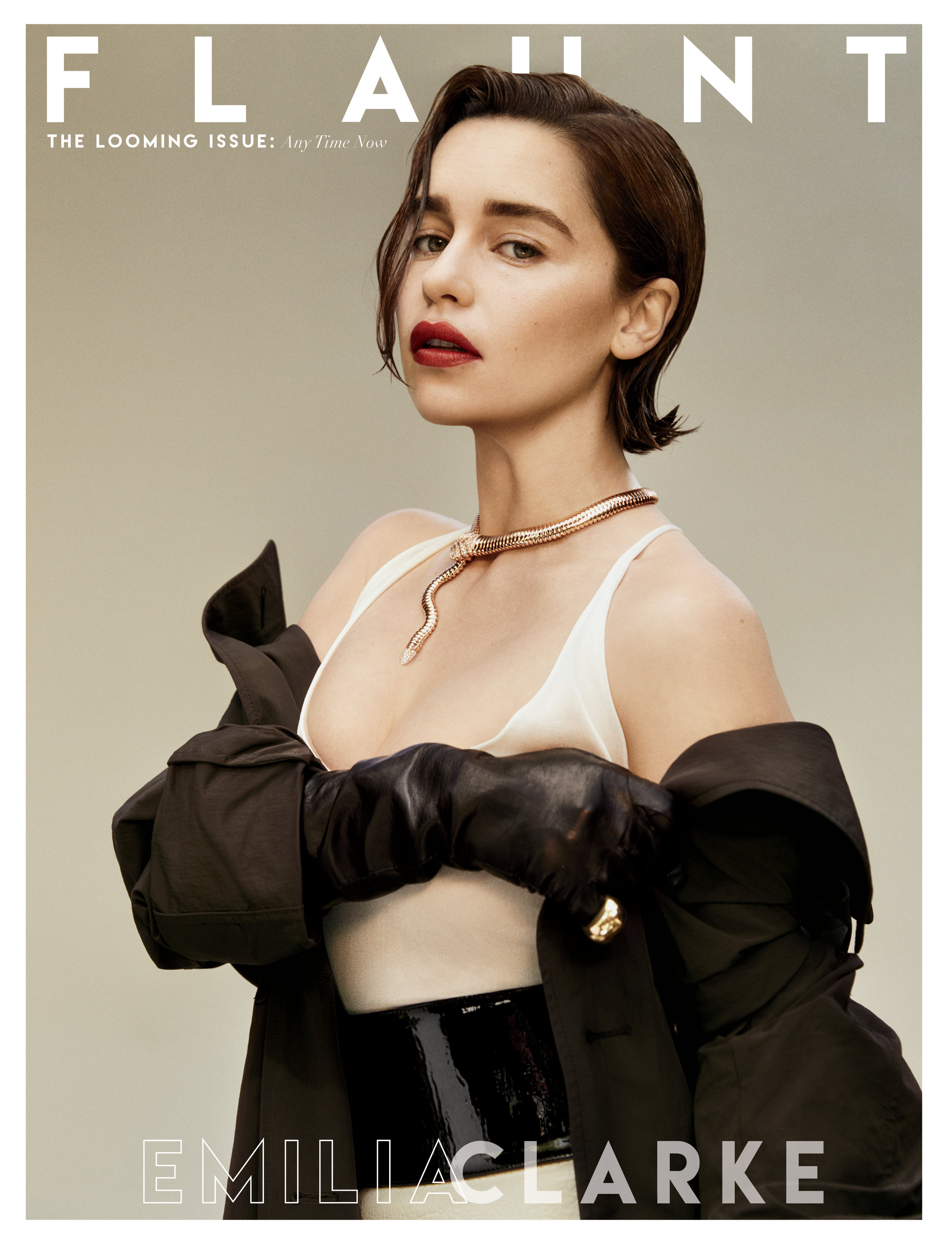
sold out
](/store/issue-166)
[Issue 166](/store/issue-166)
$15.95
**The Looming Issue:** _Any Time Now_
document.querySelector('.product-block .product-block').classList.add('is-first-product-block');
 
FLORIAN MAIER-AICHEN “UNTITLED” 2019. C-PRINT. 40 3/8 X 32 1/2 INCHES. © FLORIAN MAIER-AICHEN. COURTESY OF THE ARTIST AND BLUM & POE, LOS ANGELES / NEW YORK / TOKYO
Düsseldorf and Los Angeles are a wide aways apart. Geographically, the 5,600 or so miles is no stone’s throw; civically, denizens of the Rhineland city actually revere their scenic waterfront, strolling on the Embankment Promenade, as opposed to the eschewed and sunbaked L.A. River, an abject case study in the short-sighted reimagining of American infrastructure during the mid- twentieth century. Meteorologically, the respective metro areas lay claim to vastly differing weather patterns; damp drizzle parkas versus golden hour linen. Image-making in these places, too, draws from their own distinct sources of thought.
The Düsseldorf School of Photography of the twentieth century’s latter half derives from 1920’s German New Objectivity, favoring documentarian, matter-of-fact modes of processing and contemplating the world. Andreas Gursky’s mundane _99 cent II Diptychon_ illustrates this approach. Standing in contrast is California’s conceptually-inflected students of image-making; John Baldessari and Christopher Williams to name a few. Think color, think alchemy. Think a CalArts, UCLA, Westside chaparral-infused crucible challenging the cool and candid. The allure of cinema a few miles east shouldn’t be discounted, either.
Sitting at a long wooden table in the charming garden behind Blum & Poe Gallery (which celebrates its 25th Anniversary this year), is Florian Maier-Aichen, the Stuttgart-born photographer who splits his time between Cologne and Tinseltown. The aforementioned schools of thought have not only informed his practice via influence, but also avoidance. “I always love the pioneers of the American West, so I have a lot of references here, where as in Germany I struggle with finding good references and good starting points to take,” he shares. Maier-Aichen is calm and sipping coffee. It’s late spring— almost like a picnic. “Germany of course is grey. That grey light was very dominantly used by the German photographers so it’s very heavily noted, and one of the reasons why I packed up.”
Maier-Aichen’s departure from the _Neue Sachlichkeit,_ or New Objectivity—and the style of photography it spawned—is the beating heart of his practice. By rejecting this dominant paradigm and opting for greater experimental latitude, Maier-Aichen actualized his motives which first drew him to photography—focusing on the conditions around making imagery rather than image-making alone. “When I was a kid, we took photography in high school, and I was more interested in the chemical parts of it and developing your own film,” he reflects. “I always wanted to break away from documentary photography, which basically is what Albert Renger-Patzsch proposed, and also what made the Düsseldorf School of Photography so famous.”
Renger-Patzsch, the iconic New Objective photographer who once said, _“The secret of a good photograph...is its realism,”_ heavily influenced and spurred Bernd and Hilla Becher, who subsequently produced the Thomas Struth’s and Axel Hütte’s of the world. For Maier-Aichen, it’s been a crowded field. Renger-Patzsch’s quote, too, yields a huff and a puff. So _yesteryear._ Maier-Aichen isn’t in the business of photographic dogmas. Instead, he adheres to an idea that Susan Sontag stresses in her trailblazing and eerily prescient 1977 book of essays, _On Photography._ “Surrealism lies at the heart of the photographic enterprise,” Sontag writes, “in the very creation of a duplicate world, of a reality in the second degree, narrower but more dramatic than the one perceived by natural vision.”

FLORIAN MAIER-AICHEN “UNTITLED” 2019. C-PRINT. 40 3/8 X 32 1/2 INCHES. © FLORIAN MAIER-AICHEN. COURTESY OF THE ARTIST AND BLUM & POE, LOS ANGELES / NEW YORK / TOKYO
Düsseldorf and Los Angeles are a wide aways apart. Geographically, the 5,600 or so miles is no stone’s throw; civically, denizens of the Rhineland city actually revere their scenic waterfront, strolling on the Embankment Promenade, as opposed to the eschewed and sunbaked L.A. River, an abject case study in the short-sighted reimagining of American infrastructure during the mid- twentieth century. Meteorologically, the respective metro areas lay claim to vastly differing weather patterns; damp drizzle parkas versus golden hour linen. Image-making in these places, too, draws from their own distinct sources of thought.
The Düsseldorf School of Photography of the twentieth century’s latter half derives from 1920’s German New Objectivity, favoring documentarian, matter-of-fact modes of processing and contemplating the world. Andreas Gursky’s mundane _99 cent II Diptychon_ illustrates this approach. Standing in contrast is California’s conceptually-inflected students of image-making; John Baldessari and Christopher Williams to name a few. Think color, think alchemy. Think a CalArts, UCLA, Westside chaparral-infused crucible challenging the cool and candid. The allure of cinema a few miles east shouldn’t be discounted, either.
Sitting at a long wooden table in the charming garden behind Blum & Poe Gallery (which celebrates its 25th Anniversary this year), is Florian Maier-Aichen, the Stuttgart-born photographer who splits his time between Cologne and Tinseltown. The aforementioned schools of thought have not only informed his practice via influence, but also avoidance. “I always love the pioneers of the American West, so I have a lot of references here, where as in Germany I struggle with finding good references and good starting points to take,” he shares. Maier-Aichen is calm and sipping coffee. It’s late spring— almost like a picnic. “Germany of course is grey. That grey light was very dominantly used by the German photographers so it’s very heavily noted, and one of the reasons why I packed up.”
Maier-Aichen’s departure from the _Neue Sachlichkeit,_ or New Objectivity—and the style of photography it spawned—is the beating heart of his practice. By rejecting this dominant paradigm and opting for greater experimental latitude, Maier-Aichen actualized his motives which first drew him to photography—focusing on the conditions around making imagery rather than image-making alone. “When I was a kid, we took photography in high school, and I was more interested in the chemical parts of it and developing your own film,” he reflects. “I always wanted to break away from documentary photography, which basically is what Albert Renger-Patzsch proposed, and also what made the Düsseldorf School of Photography so famous.”
Renger-Patzsch, the iconic New Objective photographer who once said, _“The secret of a good photograph...is its realism,”_ heavily influenced and spurred Bernd and Hilla Becher, who subsequently produced the Thomas Struth’s and Axel Hütte’s of the world. For Maier-Aichen, it’s been a crowded field. Renger-Patzsch’s quote, too, yields a huff and a puff. So _yesteryear._ Maier-Aichen isn’t in the business of photographic dogmas. Instead, he adheres to an idea that Susan Sontag stresses in her trailblazing and eerily prescient 1977 book of essays, _On Photography._ “Surrealism lies at the heart of the photographic enterprise,” Sontag writes, “in the very creation of a duplicate world, of a reality in the second degree, narrower but more dramatic than the one perceived by natural vision.”
 
FLORIAN MAIER-AICHEN “WATERCOLOR, 300 FEET” 2018. C-PRINT. 89 3/4 x 69 1/2 INCHES FRAMED © FLORIAN MAIER-AICHEN. COURTESY OF THE ARTIST AND BLUM & POE, LOS ANGELES / NEW YORK / TOKYO
Viewing a Maier-Aichen print is akin to peering into an uncanny and ultraviolet parallel realm. Images are discernible; sweeping vistas of California coast clash with the endlessness
of the Pacific. Yosemite waterfalls cascade over slippery rock, leaving behind suspended mist in their wake. But the light leaks and bleeds? The sprays of water from the fall’s ejecta? “Anything can be a happy accident,” Maier-Aichen explains. These results, casualties, or accidents_,_ are what separate him from his Düsseldorfer antecedents and what can continually render image-making a living and breathing practice in the current image-saturated, quickly producible, easily discardable digital spew in which we partake.
“You have to fight against the trend,” Maier-Aichen says. “It’s really hard to make images these days. That’s one of the reasons why, at this point, I would never use Instagram to publish my images, because they’re just like a visual snack— they don’t stick.” The question of physical versus digital permanence is disputable, too. _What does make an image stick?_ Cataloguing work on a platform that, from the looks of it, isn’t going away anytime soon, is logical. But so is printing and inventorying physical copies that have undergone extensive doctoring and manipulation, both by developers’ hands, but also by nature’s intervention. It _is_ understandable why some artists would choose to allocate their oeuvre on Instagram, and why some wouldn’t. Artists can reach lots of people, of course, but the physical image, particularly the sweeping, human-length photographs Maier-Aichen takes, would be at a loss. “Scale is very important which gets totally neglected on the iPhone,” he clarifies. Palpably-speaking, an iPhone but must feel trifling, considering Maier-Aichen almost exclusively shoots with bulky 8x10 cameras, about three to four through which he circulates. Naturally, the subject is a receptive one. iPhones offer quick, highly-editable, tools which simulate chemical additives. “That’s one of the reasons why I still like film. I feel like an amateur when it comes to technique and there’s so many problems,” Maier-Aichen specifies. Experiment. Make mistakes. Leak. Bleed. Spray. We welcome the problems.
_The Limits of Control,_ Maier-Aichen’s solo exhibition at Blum & Poe, examines the artist’s holistic approach to image making and the dualisms his practice balances. On one hand, we have the photographer traversing the windy coastal highways of
the Golden State, perusing topographies in search of the right vignette, “I like the idea of using photography as a mapping tool,” he says, “of course I use Google all over the place to research locations and spaces.” The 2019 piece, _Untitled (San Fernando),_ is a slice of the real, even the mundane, of an actual place. But as a C-print, or _chromogenic print,_ that reality begins to chip away. On the other hand, an additional _Untitled_ print depletes any semblance of geography, place or reality. A chemigram printed on a C-print, the viewer is confronted with a cameraless photograph—a potpourri of light sensitive materials and poured chemicals which result in vibrant, abstract forms resembling flames, blood splatter, and amoebas.

FLORIAN MAIER-AICHEN “WATERCOLOR, 300 FEET” 2018. C-PRINT. 89 3/4 x 69 1/2 INCHES FRAMED © FLORIAN MAIER-AICHEN. COURTESY OF THE ARTIST AND BLUM & POE, LOS ANGELES / NEW YORK / TOKYO
Viewing a Maier-Aichen print is akin to peering into an uncanny and ultraviolet parallel realm. Images are discernible; sweeping vistas of California coast clash with the endlessness
of the Pacific. Yosemite waterfalls cascade over slippery rock, leaving behind suspended mist in their wake. But the light leaks and bleeds? The sprays of water from the fall’s ejecta? “Anything can be a happy accident,” Maier-Aichen explains. These results, casualties, or accidents_,_ are what separate him from his Düsseldorfer antecedents and what can continually render image-making a living and breathing practice in the current image-saturated, quickly producible, easily discardable digital spew in which we partake.
“You have to fight against the trend,” Maier-Aichen says. “It’s really hard to make images these days. That’s one of the reasons why, at this point, I would never use Instagram to publish my images, because they’re just like a visual snack— they don’t stick.” The question of physical versus digital permanence is disputable, too. _What does make an image stick?_ Cataloguing work on a platform that, from the looks of it, isn’t going away anytime soon, is logical. But so is printing and inventorying physical copies that have undergone extensive doctoring and manipulation, both by developers’ hands, but also by nature’s intervention. It _is_ understandable why some artists would choose to allocate their oeuvre on Instagram, and why some wouldn’t. Artists can reach lots of people, of course, but the physical image, particularly the sweeping, human-length photographs Maier-Aichen takes, would be at a loss. “Scale is very important which gets totally neglected on the iPhone,” he clarifies. Palpably-speaking, an iPhone but must feel trifling, considering Maier-Aichen almost exclusively shoots with bulky 8x10 cameras, about three to four through which he circulates. Naturally, the subject is a receptive one. iPhones offer quick, highly-editable, tools which simulate chemical additives. “That’s one of the reasons why I still like film. I feel like an amateur when it comes to technique and there’s so many problems,” Maier-Aichen specifies. Experiment. Make mistakes. Leak. Bleed. Spray. We welcome the problems.
_The Limits of Control,_ Maier-Aichen’s solo exhibition at Blum & Poe, examines the artist’s holistic approach to image making and the dualisms his practice balances. On one hand, we have the photographer traversing the windy coastal highways of
the Golden State, perusing topographies in search of the right vignette, “I like the idea of using photography as a mapping tool,” he says, “of course I use Google all over the place to research locations and spaces.” The 2019 piece, _Untitled (San Fernando),_ is a slice of the real, even the mundane, of an actual place. But as a C-print, or _chromogenic print,_ that reality begins to chip away. On the other hand, an additional _Untitled_ print depletes any semblance of geography, place or reality. A chemigram printed on a C-print, the viewer is confronted with a cameraless photograph—a potpourri of light sensitive materials and poured chemicals which result in vibrant, abstract forms resembling flames, blood splatter, and amoebas.
 
FLORIAN MAIER-AICHEN “UNTITLED (SAN FERNANDO)” 2019. C-PRINT. 52 7/8 x 66 5/8 INCHES. © FLORIAN MAIER-AICHEN. COURTESY OF THE ARTIST AND BLUM & POE, LOS ANGELES / NEW YORK / TOKYO
Maier-Aichen’s disposition is unique. He straddles the worlds of the literal, photographing the terrestrial, and also extends the images’ veracity and limits to the surreal, chemically and subjectively, shattering the glass ceiling of reality into polychromatic shards. “James Welling always pushed us to try to be more experimental with photography and more playful,” shares Maier-Aichen. Welling, the renowned photographer lauded for his photograms, was a mentor to Maier-Aichen while studying at UCLA. He imparted onto the fledgling artist the same drive to combine Californian Conceptual Art-making with the technical and alchemical aspects of photography.
The playfulness that Welling desired Maier-Aichen to distill in his work is visible in the “handmade” _Lasso_ paintings, one of which is exhibited in the Blum & Poe install. Maier-Aichen’s penchant to synthesize digital and analog is on full display. These pieces serve as a counterpoint to the inadvertent nature of his C-prints and chemigrams—the aforementioned happy accidents that Maier-Aichen cherishes. In contrast, he creates multi-layered scribbling rendered via Photoshop tools to completely obscure the photographic medium that lies behind. The _Lasso_ works undoubtedly have an Abstract Expressionist feel, one which someone like Clement Greenberg would likely be drawn to.
“It’s overkill when that happens,” remarks Maier-Aichen, on the ironic use of digital tools which render the inkjet print into a vomit of swatches. “That’s the problem with a lot of artists. Like directors, they have all the production means and it’s actually not too dependable...”
Maier-Aichen’s reference of directors and the aura of Hollywood are endemic to his work—a continuation of the physical and surreal in-between. Films, after all, are cinematic and hyperreal reflections of the physical world through the lens of post-production editing, special effects, and other forms of alteration. Los Angeles’ cultural love affair with _golden hour,_ the fleeting moment right before the sun sets, makes all the difference for Maier-Aichen. “I use Los Angeles as a playground,” he says, “Without the light, the city turns into a prop, too many two-by-fours and stucco stuck together...” Peek behind the curtain and see what’s there. Light matters. “This past week I always realize, when it’s overcast and when it rains, it doesn’t work visually to my agenda.” _Ahh,_ the Limits of Control...

FLORIAN MAIER-AICHEN “UNTITLED (SAN FERNANDO)” 2019. C-PRINT. 52 7/8 x 66 5/8 INCHES. © FLORIAN MAIER-AICHEN. COURTESY OF THE ARTIST AND BLUM & POE, LOS ANGELES / NEW YORK / TOKYO
Maier-Aichen’s disposition is unique. He straddles the worlds of the literal, photographing the terrestrial, and also extends the images’ veracity and limits to the surreal, chemically and subjectively, shattering the glass ceiling of reality into polychromatic shards. “James Welling always pushed us to try to be more experimental with photography and more playful,” shares Maier-Aichen. Welling, the renowned photographer lauded for his photograms, was a mentor to Maier-Aichen while studying at UCLA. He imparted onto the fledgling artist the same drive to combine Californian Conceptual Art-making with the technical and alchemical aspects of photography.
The playfulness that Welling desired Maier-Aichen to distill in his work is visible in the “handmade” _Lasso_ paintings, one of which is exhibited in the Blum & Poe install. Maier-Aichen’s penchant to synthesize digital and analog is on full display. These pieces serve as a counterpoint to the inadvertent nature of his C-prints and chemigrams—the aforementioned happy accidents that Maier-Aichen cherishes. In contrast, he creates multi-layered scribbling rendered via Photoshop tools to completely obscure the photographic medium that lies behind. The _Lasso_ works undoubtedly have an Abstract Expressionist feel, one which someone like Clement Greenberg would likely be drawn to.
“It’s overkill when that happens,” remarks Maier-Aichen, on the ironic use of digital tools which render the inkjet print into a vomit of swatches. “That’s the problem with a lot of artists. Like directors, they have all the production means and it’s actually not too dependable...”
Maier-Aichen’s reference of directors and the aura of Hollywood are endemic to his work—a continuation of the physical and surreal in-between. Films, after all, are cinematic and hyperreal reflections of the physical world through the lens of post-production editing, special effects, and other forms of alteration. Los Angeles’ cultural love affair with _golden hour,_ the fleeting moment right before the sun sets, makes all the difference for Maier-Aichen. “I use Los Angeles as a playground,” he says, “Without the light, the city turns into a prop, too many two-by-fours and stucco stuck together...” Peek behind the curtain and see what’s there. Light matters. “This past week I always realize, when it’s overcast and when it rains, it doesn’t work visually to my agenda.” _Ahh,_ the Limits of Control...
 
FLORIAN MAIER-AICHEN “UNTITLED (SUNSET)” 2019. C-PRINT. 89 x 70 3/8 INCHES. © FLORIAN MAIER-AICHEN. COURTESY OF THE ARTIST AND BLUM & POE, LOS ANGELES / NEW YORK / TOKYO
While _golden hour_ excites us—fingers trigger-happy to snap the perfect shot amidst the warm glow, rich _golden hours_ in Southern California also signify the impending natural disasters of the region. Earthquakes, mudslides, and wildfires remind single-home dwellers that the borders between suburbia and wilderness are volatile sites. Maier-Aichen’s C-print, _Untitled (Sunset),_ stands out as one of the most potent examples of the prosaic and sublime that the photographer has bridged in _Limits of Control._ Featured is the Malibu Coast and it’s problematic beauty. Taken at face value, the piece is a psychedelic vista into the Pacific. Peer closer, and to the bottom right is charred and smoldered foliage. Maier-Aichen says he took the image not too long after the devastating Woolsey fires which ravaged the area in late 2018. It’s hard not to think of Mike Davis’ musings on letting Malibu burn in _Ecology of Fear._
_100-mile photograph_ is a C-print from a past show in 2014 which also illustrates a crimson mountainscape and encroaching suburb. The print _looks_ toxic, like iron oxide deposits from fracking or other human-derived jetsam. Maier-Aichen, though, isn’t in the business of message disseminating and political stance taking. “I don’t have a political agenda with the images,” he clarifies. “It just stems again from the idea of breaking out from the objective school of photography and using different approaches to create my own color palette.” We’re reminded that Maier-Aichen isn’t a documentarian. The “toxic landscape,” he shares, “was my way of using infrared film which I discovered in the early 2000s.”
He continues, “Documenting disasters I think would be too voyeuristic on my behalf,” briefly referencing a photograph of the collapsed I-105 / I-110 freeway interchange from a past show. “I’m not sure if that’s enough of an original image to me or if it just steals one direction of the voyeur.” Images as bases on which to paint, etch, expand and probe. Grab the cumbersome 8x10 camera and shoot away. At the long wooden table, Maier-Aichen is content. He plans on returning to Yosemite soon to catch the waterfalls which have grown exponentially after the rains this season. Onwards and upwards; spraying, leaking and creating.
* * *
[
sold out
](/store/issue-166)
[Issue 166](/store/issue-166)
$15.95
**The Looming Issue:** _Any Time Now_
document.querySelector('.product-block .product-block').classList.add('is-first-product-block');

FLORIAN MAIER-AICHEN “UNTITLED (SUNSET)” 2019. C-PRINT. 89 x 70 3/8 INCHES. © FLORIAN MAIER-AICHEN. COURTESY OF THE ARTIST AND BLUM & POE, LOS ANGELES / NEW YORK / TOKYO
While _golden hour_ excites us—fingers trigger-happy to snap the perfect shot amidst the warm glow, rich _golden hours_ in Southern California also signify the impending natural disasters of the region. Earthquakes, mudslides, and wildfires remind single-home dwellers that the borders between suburbia and wilderness are volatile sites. Maier-Aichen’s C-print, _Untitled (Sunset),_ stands out as one of the most potent examples of the prosaic and sublime that the photographer has bridged in _Limits of Control._ Featured is the Malibu Coast and it’s problematic beauty. Taken at face value, the piece is a psychedelic vista into the Pacific. Peer closer, and to the bottom right is charred and smoldered foliage. Maier-Aichen says he took the image not too long after the devastating Woolsey fires which ravaged the area in late 2018. It’s hard not to think of Mike Davis’ musings on letting Malibu burn in _Ecology of Fear._
_100-mile photograph_ is a C-print from a past show in 2014 which also illustrates a crimson mountainscape and encroaching suburb. The print _looks_ toxic, like iron oxide deposits from fracking or other human-derived jetsam. Maier-Aichen, though, isn’t in the business of message disseminating and political stance taking. “I don’t have a political agenda with the images,” he clarifies. “It just stems again from the idea of breaking out from the objective school of photography and using different approaches to create my own color palette.” We’re reminded that Maier-Aichen isn’t a documentarian. The “toxic landscape,” he shares, “was my way of using infrared film which I discovered in the early 2000s.”
He continues, “Documenting disasters I think would be too voyeuristic on my behalf,” briefly referencing a photograph of the collapsed I-105 / I-110 freeway interchange from a past show. “I’m not sure if that’s enough of an original image to me or if it just steals one direction of the voyeur.” Images as bases on which to paint, etch, expand and probe. Grab the cumbersome 8x10 camera and shoot away. At the long wooden table, Maier-Aichen is content. He plans on returning to Yosemite soon to catch the waterfalls which have grown exponentially after the rains this season. Onwards and upwards; spraying, leaking and creating.
* * *
[
sold out
](/store/issue-166)
[Issue 166](/store/issue-166)
$15.95
**The Looming Issue:** _Any Time Now_
document.querySelector('.product-block .product-block').classList.add('is-first-product-block');

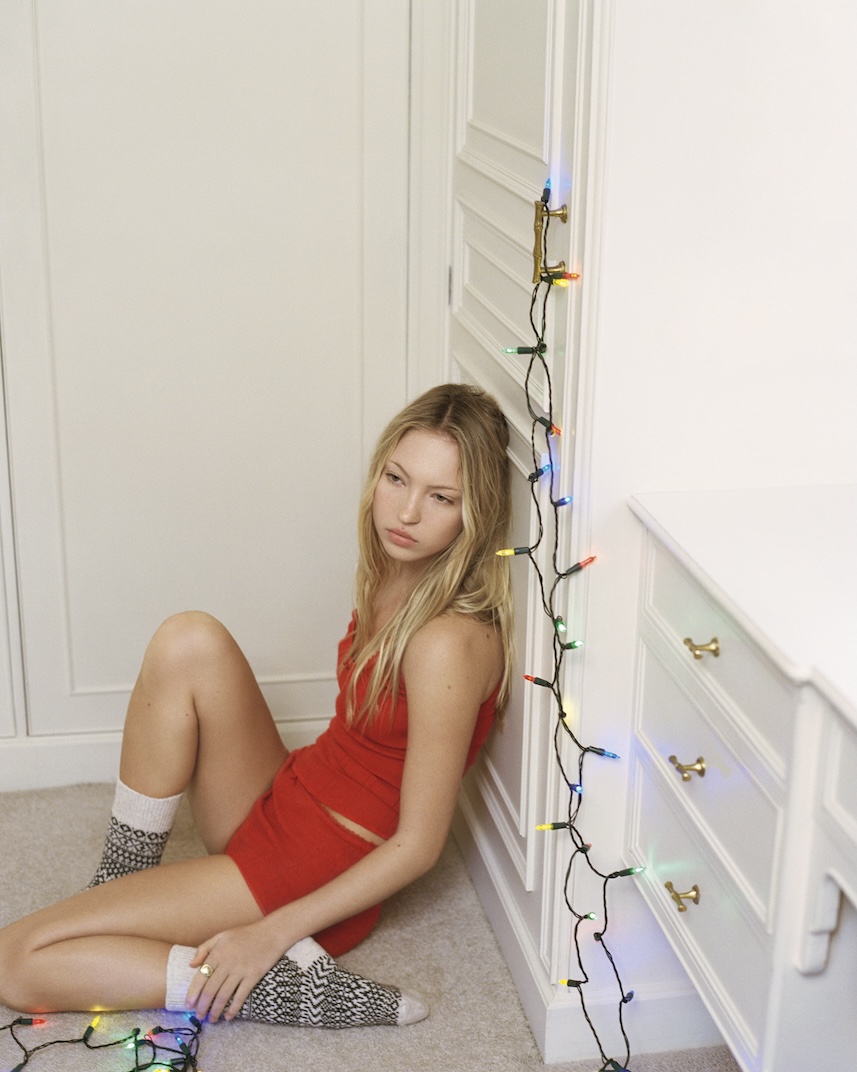
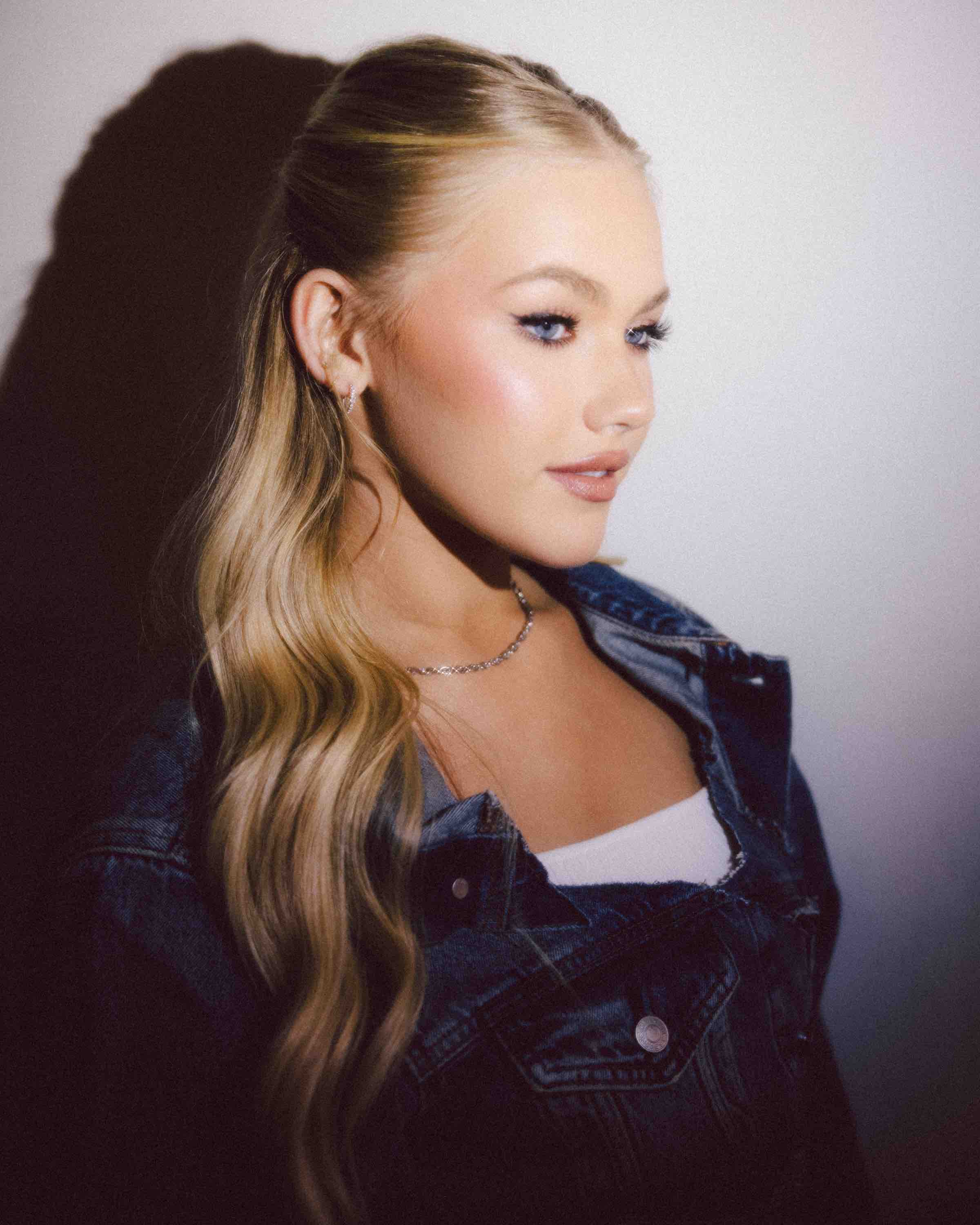



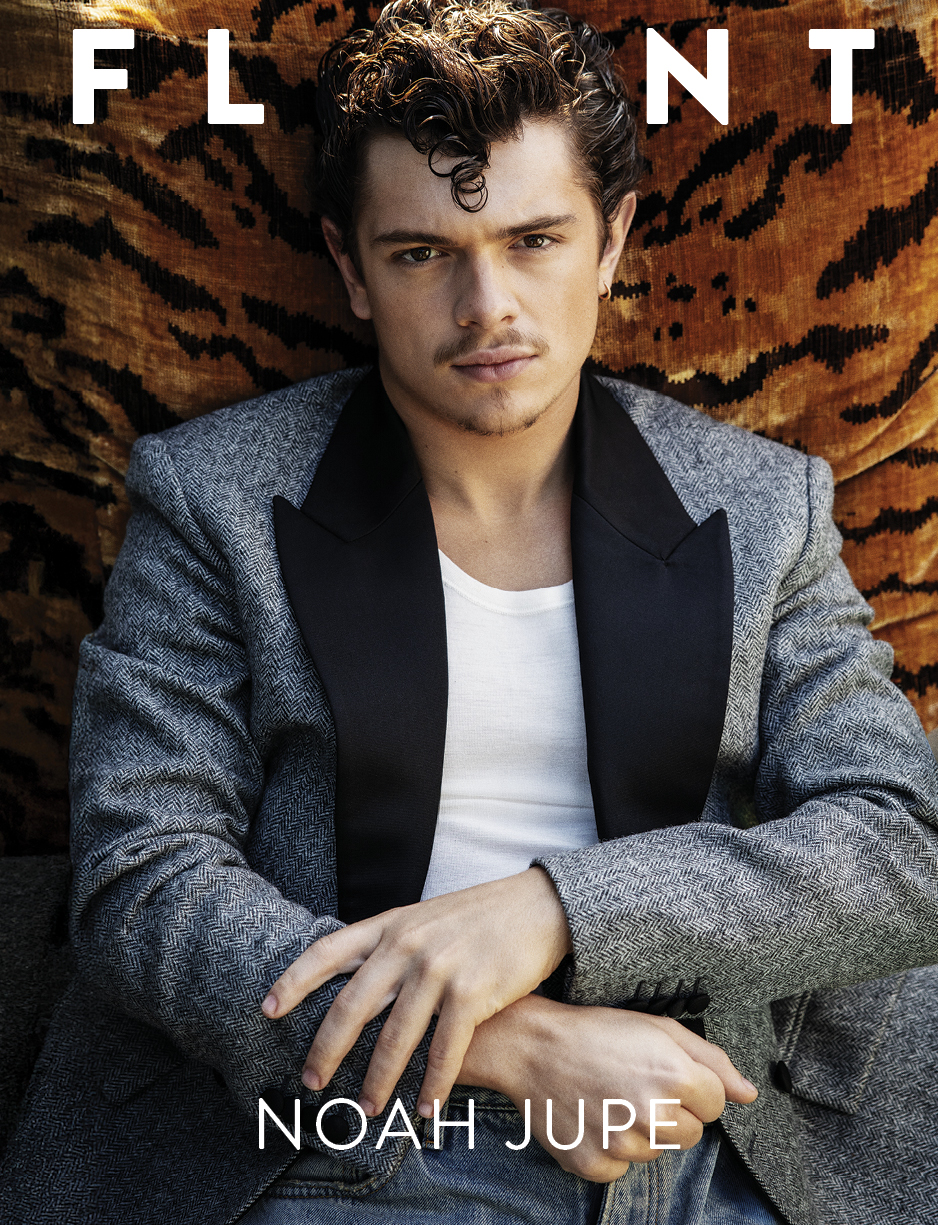
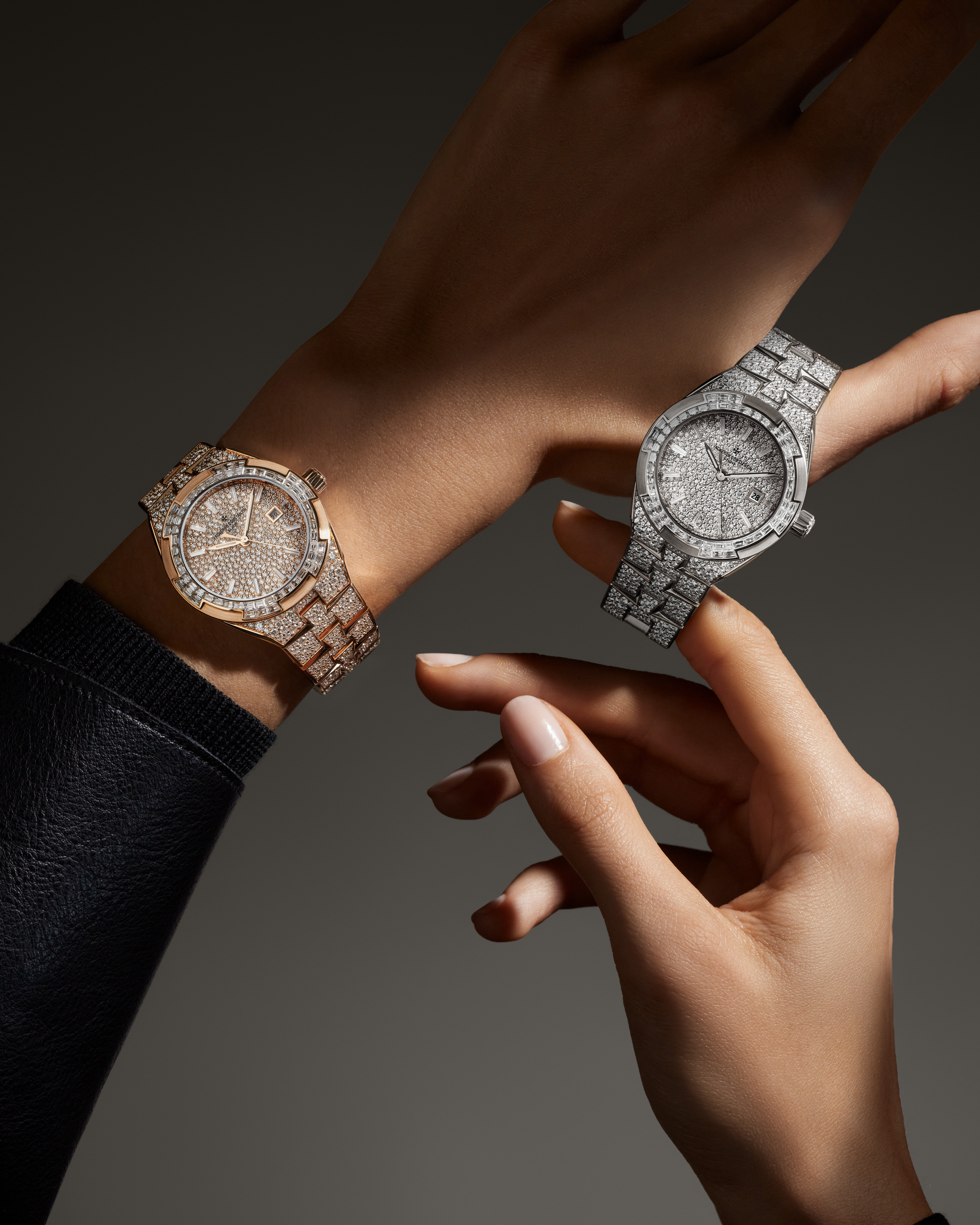
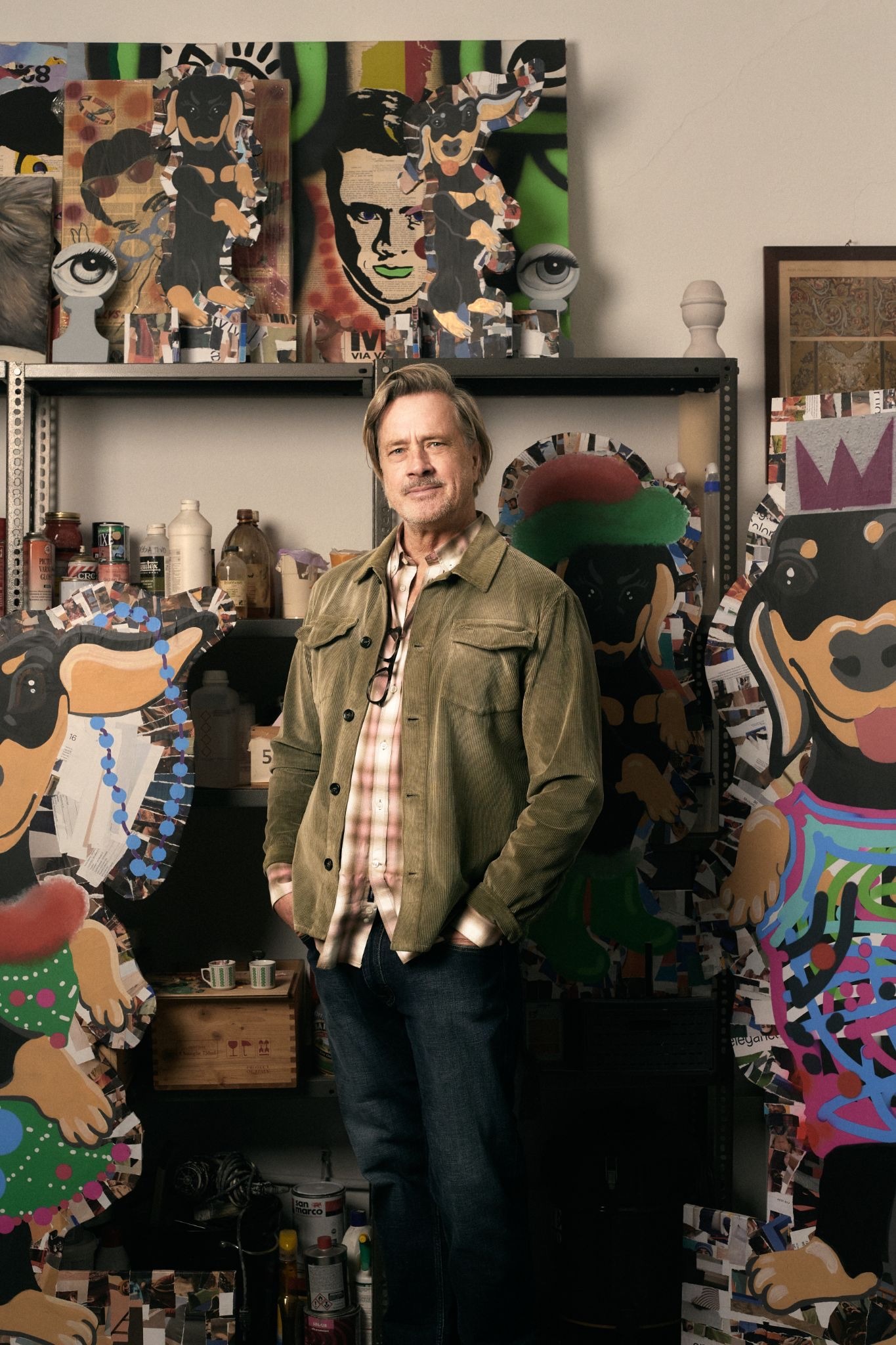
.JPG)
.jpg)
